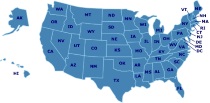Things to See & Do in North Carolina
Shankar's International Children's Competition (SICC)
K. Shankar Pillai (July 31, 1902–December 26, 1989) was a famous cartoonist. He brought out a political magazine called ‘Shankar’s Weekly’. Under the auspices of this magazine, a competition called the Shankar’s International Children’s Competition was organized in 1949. It invited paintings and writings from children in India. Children sent about 3,000 entries. The following year the competition was thrown open to children from all over the world.
Today, the competition has grown and about 1,60,000 entries are received from over 130 countries. The entries are judged by an international jury. The prizewinning entries are compiled in a volume called the ‘Shankar’s Children’s Art Number’. The competition is open to children all over the world below the age of 16 years. There is no entry fee and competitors are free to choose the theme/subject they are interested in, or like most, for their paintings/ drawings/writings.
SOS Children's Villages - USA Family Dinner Time Art Contest
The Family Dinner Time Art Contest celebrates family dinner time and kicks off on Thanksgiving each year. Children may submit artwork of their family at dinner time to win a home computer. Artwork can be in any form, but must illustrate a family eating together. For sculptures and other difficult-to-ship items, please send a photo as opposed to the actual artwork.
A winner will be selected from each age group: preschool ages 1-7; grade school ages 8-12; and high school ages 13 -17.
Teaching Tips & Ideas
Masterpiece Art Instruction
Masterpiece Art Instruction offers a free newsletter, "Teach Art at Home," along with free projects and lessons, art instruction CDs, and more
How I Teach a Large Family in a Relaxed, Classical Way: Fine Arts
Ideas for incorporating fine art education into a large homeschool family curriculum.
Featured Resources
As an Amazon Associate, we earn from qualifying purchases. We get commissions for purchases made through links on this site.
Montessori International
Montessori International is the magazine for all parents and teachers. Montessori International magazine is a high quality colour education magazine with a Montessori focus and a truly child-centred approach. The magazine is for Montessori parents, nursery owners, teachers, and students with an interest in Montessori education.
Homeschool Open House
Personal insights from 55 families worldwide about a real day of homeschooling. Includes homeschool illusions, family culture, learning and family style, parenting strategies, chores and organization, family management, personal empowerment, decision making, change flexibility, resources, and questions to consider before deciding to homeschool. A private tour of homeschooling homes and reflective thoughts from families. Also includes five year follow-ups from families in HOMESCHOOLING: A PATCH...
America's Spectacular National Parks
The concept of the national park is an American contribution to world civilization, and it remains a defining characteristic of our country. From the rocky shore of Maine's Acadia to the barren crater and lush rain forest of Hawaii's Haleakala, America's national beauty is celebrated and preserved in its national parks. This book retells the history of each park, describes its most important features and wildlife, and reproduces its gorgeous scenery in full-color photographs that will enthrall a...
Perrine's Sound & Sense: An Introduction to Poetry
Perrine's Sound and Sense is a fantastic book for studying poetry with your children. It is a great resource for high school students. It includes clear and thorough explanations of devices, forms, how to analyze poetry, and more, as well as a huge variety of poems, both classic and contemporary.
Only Child: Writers on the Singular Joys and Solitary Sorrows of Growing Up Solo
Only children don’t have to share bedrooms, toys, or the backseat of a car. They don’t have to share allowances, inheritances, or their parents’ attention. But when they get into trouble, they can’t just blame their imaginary friends. In Only Child, twenty-one acclaimed writers tell the truth about life without siblings—the bliss of solitude, the ache of loneliness, and everything in between.In this unprecedented collection, writers like Judith Thurman, Kathryn Harrison, John Hodgman, and Peter ...




